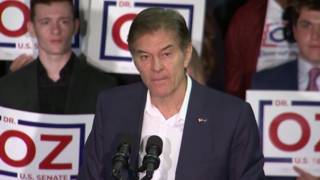This content originally appeared on Human Rights Watch and was authored by Human Rights Watch.
This post was originally published on Radio Free.
This content originally appeared on Human Rights Watch and was authored by Human Rights Watch.
This post was originally published on Radio Free.
This content originally appeared on The Real News Network and was authored by The Real News Network.
This post was originally published on Radio Free.
This content originally appeared on The Real News Network and was authored by The Real News Network.
This post was originally published on Radio Free.
The Committee to Protect Journalists has submitted a report on the state of press freedom and journalist safety in Kyrgyzstan to the United Nations Human Rights Council ahead of its 2025 Universal Periodic Review (UPR) session.
CPJ’s submission, together with Austria-based human rights group Freedom for Eurasia and the Free Russia Foundation, highlights the sharp deterioration in media freedom in Kyrgyzstan, once vaunted as a relative Central Asian safe haven for free press, since the country’s 2020 UPR review.
Following current President Sadyr Japarov’s rise to power, Kyrgyz authorities have launched an unprecedented assault on independent reporting, imprisoning journalists on retaliatory charges, blocking and shuttering key media, and introducing a Russian-style “foreign agents” law.
Read the full report here.
This content originally appeared on Committee to Protect Journalists and was authored by CPJ Staff.
This post was originally published on Radio Free.

President-elect Donald Trump has tapped several TV personalities for key posts in his incoming administration, including Dr. Mehmet Oz to run the Centers for Medicare and Medicaid Services, an agency that oversees health coverage for 150 million people. Oz, who ran an unsuccessful campaign for Senate in Pennsylvania in 2022, supports privatizing Medicare. “His background really has nothing to do with the Centers for Medicare and Medicaid Services,” says Dr. Robert Steinbrook, director of the Health Research Group for Public Citizen.
This content originally appeared on Democracy Now! and was authored by Democracy Now!.
This post was originally published on Radio Free.
This content originally appeared on Gaslit Nation and was authored by Andrea Chalupa.
This post was originally published on Radio Free.
New York, November 19, 2024—In the weeks since Mozambique’s October 9 general election — which was characterized by irregularities and in which the ruling Frelimo party claimed victory — the country has descended into chaos as security personnel engage in violent clashes with protestors disputing the results.
News reports and statements by human rights groups show that journalists covering the post-election crackdown have not been spared from the violence, which has left at least 45 dead.
Authorities have assaulted or arrested at least nine journalists and expelled at least two foreign correspondents. The government has imposed several Internet disruptions, further hindering news gathering and reporting.
Journalism has become “too risky and often impossible,” Gervásio Nhampulo, a journalist in northern Niassa province, told CPJ. “We have families to consider if something happens to us.”

Since the elections, CPJ documented the following press freedom violations:
Journalists detained
Siziba told CPJ she heard shots fired in an adjoining room and the cries of people who appeared to have been beaten. “We couldn’t sleep. We didn’t know if we were next,” she said.
Mkhasibe told CPJ the men refused to give him his blood pressure and diabetes medication while detained.
Journalists shot at, attacked

Expelled from the country
Equipment confiscated
In an October 22 press conference, spokesperson of the Mozambican Council of Ministers Filimão Swaze said police did not target journalists, and they were attacked while covering protests on October 21 because they were “in a place where there were also protestors.”
CPJ did not receive responses to calls and messages to Maputo police spokesperson Leonel Muchina, Mozambique police general commandant Bernardino Rafael, and Swaze.
In recent years, Mozambican authorities have harassed, beaten, and charged several journalists. Authorities have yet to credibly account for the 2020 disappearance of radio journalist Ibraimo Mbaruco.
This content originally appeared on Committee to Protect Journalists and was authored by CPJ Staff.
This post was originally published on Radio Free.
Comprehensive coverage of the day’s news with a focus on war and peace; social, environmental and economic justice.
More than 40 arrested during pro-Palestine protest in Washington, D.C.
With trifecta power, republicans look to extend tax cuts and slash social services.
FEMA head investigated for political discrimination.
The post The Pacifica Evening News, Weekdays – November 19, 2024 appeared first on KPFA.
This content originally appeared on KPFA – The Pacifica Evening News, Weekdays and was authored by KPFA.
This post was originally published on Radio Free.
This content originally appeared on The Real News Network and was authored by The Real News Network.
This post was originally published on Radio Free.
This content originally appeared on The Grayzone and was authored by The Grayzone.
This post was originally published on Radio Free.
This content originally appeared on The Grayzone and was authored by The Grayzone.
This post was originally published on Radio Free.
This content originally appeared on The Grayzone and was authored by The Grayzone.
This post was originally published on Radio Free.
This content originally appeared on Democracy Now! and was authored by Democracy Now!.
This post was originally published on Radio Free.
This content originally appeared on Radio Free Europe/Radio Liberty and was authored by Radio Free Europe/Radio Liberty.
This post was originally published on Radio Free.
This content originally appeared on The Real News Network and was authored by The Real News Network.
This post was originally published on Radio Free.
This content originally appeared on VICE News and was authored by VICE News.
This post was originally published on Radio Free.
This content originally appeared on Radio Free Europe/Radio Liberty and was authored by Radio Free Europe/Radio Liberty.
This post was originally published on Radio Free.
This content originally appeared on Democracy Now! and was authored by Democracy Now!.
This post was originally published on Radio Free.
Read coverage of this story in Chinese
Sentencing is expected on Tuesday following the trial of 47 Hong Kong opposition politicians and pro-democracy activists charged with subversion under the city’s 2020 National Security Law for taking part in a democratic primary in the summer of 2020.
Police on Monday cordoned off the area outside the city’s High Court with traffic barriers and high fences, with armored vehicles standing by.
The charge of “conspiracy to commit subversion” carries a maximum penalty of life imprisonment, but a range of custodial sentences looks likely following three months of mitigation hearings that concluded on Sept. 3.
Exiled former pro-democracy lawmaker Ted Hui said the security measures were “a symbol of iron curtain suppression.”
“The use of high fencing to enclose the court … sends the message that the government is in total control, and that people had better not even dream of putting up any resistance,” Hui said. “The aim is to make the people of Hong Kong give up.”
The Hong Kong High Court found 14 democrats guilty of “conspiracy to commit subversion,” more than three years after their initial arrests in January 2021, including former pro-democracy lawmaker and veteran social activist Leung Kwok-hung and union leader Carol Ng.
Two defendants were acquitted.
RELATED STORIES
One year after mass jailings, Hong Kong remembers the 47
Charging of Politicians For ‘Subversion’ in Hong Kong Sparks International Outcry
Marathon Hong Kong Bail Hearing Ends With 47 Activists Behind Bars
Jailed pro-democracy activist Joshua Wong, Occupy Central founder Benny Tai and journalist-turned-lawmaker Claudia Mo were among 31 defendants who pleaded guilty in a political climate where acquittals have become rare, but where a guilty plea could mean a much lighter sentence.
Former journalist Gwyneth Ho, a 2019 protest movement activist, former nursing student Owen Chow and labor unionist Winnie Yu were among those who pleaded not guilty, and stood trial between Feb. 6 and Dec. 4, 2023 before a panel of three government-picked national security judges and no jury.
Repeated delays to the 118-day trial have meant that the majority have been behind bars for more than three-and-a-half years already, something that would have been previously unheard of in the Hong Kong judicial system.
What did the activists do?
The 47 former pro-democracy lawmakers and opposition activists had helped to organize a primary election in July 2020, in a bid to find the best candidates for a pan-democratic slate in the September 2020 Legislative Council elections.
The prosecution argued that their bid to win a majority was “a conspiracy” to undermine the city’s government and take control of the Legislative Council.
Article 22 of China’s National Security Law for Hong Kong bans anyone from “seriously interfering in, disrupting or undermining the performance of duties and functions in accordance with the law by the body of central power of the People’s Republic of China or the body of power of the Hong Kong Special Administrative Region by force or threat of force or other unlawful means.”
More than 600,000 voters took part in the primary, which was part of a bid to win enough votes for pro-democracy candidates to veto the government’s budget, which would have offered the opposition camp valuable political leverage when negotiating with the government.
How did the authorities react?
As Beijing-backed media claimed the primary was a bid to overthrow the city government, the administration of then-Chief Executive Carrie Lam announced an investigation into the event.
Lam also postponed the September 2020 election, while the government rewrote the electoral rulebook to prevent pro-democracy candidates from running, eventually holding a fresh election in December 2021 in which only “patriots” approved by a Beijing-backed committee were allowed to stand.
On Jan. 6, 2021, the newly formed national security police dispatched more than 1,000 officers to 72 locations across Hong Kong, arresting 55 people on suspicion of subversion under the National Security Law in a move that pro-democracy activists said struck a “devastating blow” to the city’s political life.
They brought formal charges against 47 of them, then denied bail to the majority following a grueling arraignment hearing lasting more than four days, including a first-day session of 15 hours, during which defendants were unable to eat, shower or get a change of clothes.
How did the rest of the world react?
The charges were the first clear indication that the ruling Chinese Communist Party and Hong Kong officials would be using the National Security Law to crack down on peaceful opposition and public dissent, rather than to restore public order in the wake of the 2019 protests, and sparked an international outcry.
The last British colonial governor of Hong Kong, Lord Patten of Barnes, said the trial was part of a political “purge” by the ruling Chinese Communist Party.
Washington condemned the detention and charging of democrats, with Secretary of State Antony Blinken calling for their immediate release.
Then-British foreign secretary Dominic Raab called the charges “deeply disturbing” and said it showed how the National Security Law was being used to eliminate political dissent rather than restoring order following the 2019 protest movement, as the government had claimed.
Then-Australian foreign minister Marise Payne said the 47 defendants “were peacefully exercising their rights,” while the German foreign ministry called on the Hong Kong authorities to release the defendants and schedule postponed elections to the Legislative Council “in a fair and democratic manner.”
What are the implications for Hong Kong?
Exiled Hong Kong democracy activist Fu Tong, who now lives in democratic Taiwan, said it wasn’t just the 47 defendants who had been criminalized by the process.
“It wasn’t just them on trial, but all 600,000 of us who voted [in the primary],” Fu told RFA on Nov. 18. “We have become criminals too.”
The case normalized the use of a three-judge panel and no jury, as well as restrictions on meetings with lawyers for defendants in national security trials, observers said.
Described by the U.S. Senate Foreign Relations Committee as a “sham trial,” the case was an early indicator that political trials would likely become far more common in Hong Kong following the imposition of the 2020 National Security Law.
In December 2023, Hong Kong plummeted in Cato Institute’s Human Freedom Index, with the annual rights report describing China’s crackdown in the city as a “descent into tyranny.”
The city – once ranked in the top 10 freest territories in the world – dropped from 3rd place in 2010 to 46th place in 2021 out of 165 countries, the Cato Institute said in its 2023 report. It fell 17 spots from 2020.
The report found “notable deterioration” in nearly every kind of freedom, but particularly in its rule of law, freedom of expression, and freedom of association and assembly ratings.
Translated by Luisetta Mudie. Edited by Luisetta Mudie and Joshua Lipes.
This content originally appeared on Radio Free Asia and was authored by Ha Syut for RFA Cantonese, Chen Zifei for RFA Mandarin.
This post was originally published on Radio Free.
This content originally appeared on Human Rights Watch and was authored by Human Rights Watch.
This post was originally published on Radio Free.
This content originally appeared on VICE News and was authored by VICE News.
This post was originally published on Radio Free.
This content originally appeared on The Intercept and was authored by The Intercept.
This post was originally published on Radio Free.
This content originally appeared on The Real News Network and was authored by The Real News Network.
This post was originally published on Radio Free.
This content originally appeared on Human Rights Watch and was authored by Human Rights Watch.
This post was originally published on Radio Free.
This content originally appeared on The Real News Network and was authored by The Real News Network.
This post was originally published on Radio Free.
This content originally appeared on Radio Free Europe/Radio Liberty and was authored by Radio Free Europe/Radio Liberty.
This post was originally published on Radio Free.